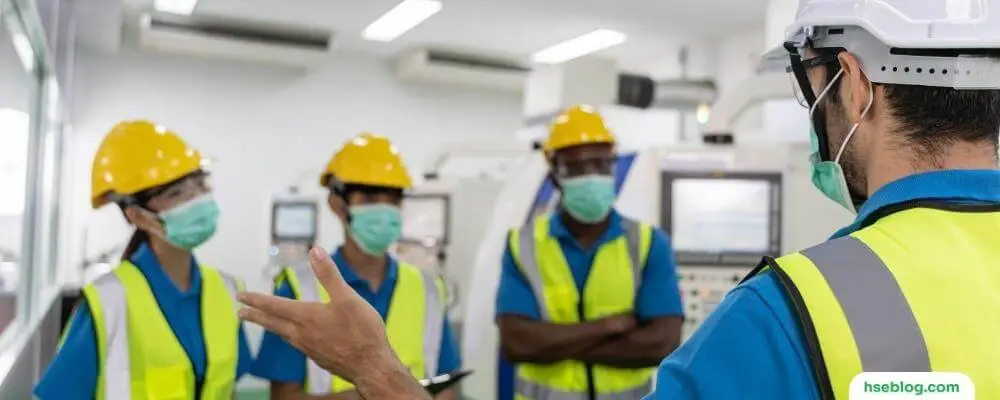Health and safety standards are essential in any society to ensure the well-being of its citizens. These standards can be implemented and enforced by various entities, including businesses, organizations, and governments. However, government plays a crucial role in promoting and regulating health and safety standards across various industries and activities.
The role of government in ensuring health and safety standards is multifaceted. It involves creating and enforcing regulations and laws that mandate minimum workplace safety, food safety, and environmental protection standards. Government agencies are also responsible for monitoring compliance with these standards, investigating violations, and imposing penalties when necessary.
In this blog post, we will explore how national governments can contribute to good standards of health & safety – from updating existing laws to introducing new initiatives – and highlight some significant examples worth noting.
National Government Contribution Towards Good Standards Of Health And Safety
Following are the ways in which national governments can contribute to good standards of health & safety:
Need To Announce Health And Safety Policy At The National Level
Governments play a crucial role in promoting good health and safety standards by announcing clear and concise occupational health and safety policies at the national level. This policy should outline the protection and support offered by government departments to ensure the safety and well-being of employees.
Additionally, it should include details on the responsibilities of both employers and employees to create a safe working environment. By setting these guidelines, companies can implement effective health and safety regulations and protect their staff from potential harm.

Pass Health And Safety Act
One of the essential measures governments can take towards promoting good health and safety standards is passing health and safety legislation through parliament. This legislative process not only enacts necessary laws but also demonstrates the government’s commitment to safeguarding the public from harm.
By enacting these laws, national governments can enforce specific regulations or guidelines that employers must follow to ensure the safety of their staff. This is critical in creating a healthy and safe work environment for everyone involved.
Develop Independent Legislation Or Adopt ILO Conventions
National governments should develop independent legislation or adopt International Labour Organisation (ILO) conventions and recommendations. These conventions and recommendations help to ensure that workers receive fair and safe working conditions.
ILO Conventions such as C155 provide legislation on occupational safety and health, while Recommendations like R164 guide best practices for improving workplace safety and health. Adopting these conventions and recommendations ensures that employers are taking necessary steps to ensure the well-being of their staff.
To Ensure That Adequate Health & Safety Legislation
The government’s primary responsibility for promoting good health and safety standards is to continuously update adequate legislation. This involves introducing laws that require employers to take appropriate measures to protect their employees from workplace hazards, such as following prescribed procedures for handling hazardous materials.
It also entails safeguarding public safety by regulating activities in the workplace that may compromise health, such as protecting workers from exposure to asbestos, hazardous chemicals, and other potential hazards. By implementing and enforcing such legislation, governments can help create safer and healthier work environments and prevent potential harm to employees and the public.
To Facilitate Compliance With Health & Safety Regulations
Another crucial responsibility of governments towards promoting good health and safety standards is to facilitate compliance with health & safety regulations. This involves providing support and guidance to employers, increasing workplace inspections to ensure compliance with laws, imposing fines/penalties on those who violate regulations, and offering training to workers to increase awareness of their rights.
By doing so, governments can encourage employers to take responsibility for protecting their employees and public safety, thereby creating a safer and healthier work environment for everyone involved.
To Introduce New Initiatives
To further promote good health and safety standards, governments can introduce new initiatives to improve workplace safety and minimize the risk of workplace accidents. These initiatives could include providing incentives to employers who meet specific safety standards, introducing new laws that make it easier for workers to report any issues or concerns related to workplace safety, and providing necessary resources and support to employers to ensure the safety of their staff.
By introducing such initiatives, governments can encourage employers to take proactive measures to prevent workplace accidents and create a safer and healthier work environment for their employees.

Additional Steps A Government Can Take
Additional Steps How National Government Can Contribute Towards Good Standards Of Health And Safety:
- The National government should establish independent authorities for managing Health and safety.
- National Government should also develop enforcement agencies for the implementation of laws.
- Those enforcement inspectors should make an Inspection Regime based on received complaints and priority due to high risk, routine or random selection of places for inspection.
- The National advisory body should be established to provide guidance and approve the code of practice to employers. A research center should be made to improve health and safety standards.
- The National government should start social and print media advertising campaigns to bring awareness regarding health and safety legislation, punishments, requirements, responsibilities of employers and employees, and plans and goals regarding health and safety.
- Complaint mechanisms should be devised for the employees, and SOPs should be made to deal with the complaints.
- Similarly, the National government should list or define specified events(like dangerous occurrences), and an accident reporting mechanism should be developed.
- National Government should also establish a statistics department to analyze the data on reported accidents, injuries, or diseases. It helps in measuring the performance of the government and related authorities. It also helps in decisions regarding the allocation of resources. National incidence rates should be published annually.
- The National government should also provide insurance and social security schemes to cover losses in accidents, injuries, or diseases.
- The National government should clearly define the Roles and responsibilities of employees and employers, the consequences of non-compliance with health and safety standards, and the powers of health and safety inspectors to smooth systems without conflicts.
These are just a few examples of the steps national governments can take to ensure the safety and health of their workers. Governments can protect their citizens by enacting occupational solid health and safety policies at the national level and help create a safe and healthy working environment.
Conclusion
Promoting good health and safety standards in the workplace is essential for creating a healthy and safe work environment for employees. Governments play a vital role in ensuring employers protect their employees’ health and safety. They can achieve this by setting standards, educating employers and employees, enforcing regulations, promoting research, and providing support.
Governments must prioritize workplace health and safety to prevent accidents, minimize risks, and protect workers’ health and well-being. Governments can help create a safer and healthier work environment by working with employers, employees, and other stakeholders.

